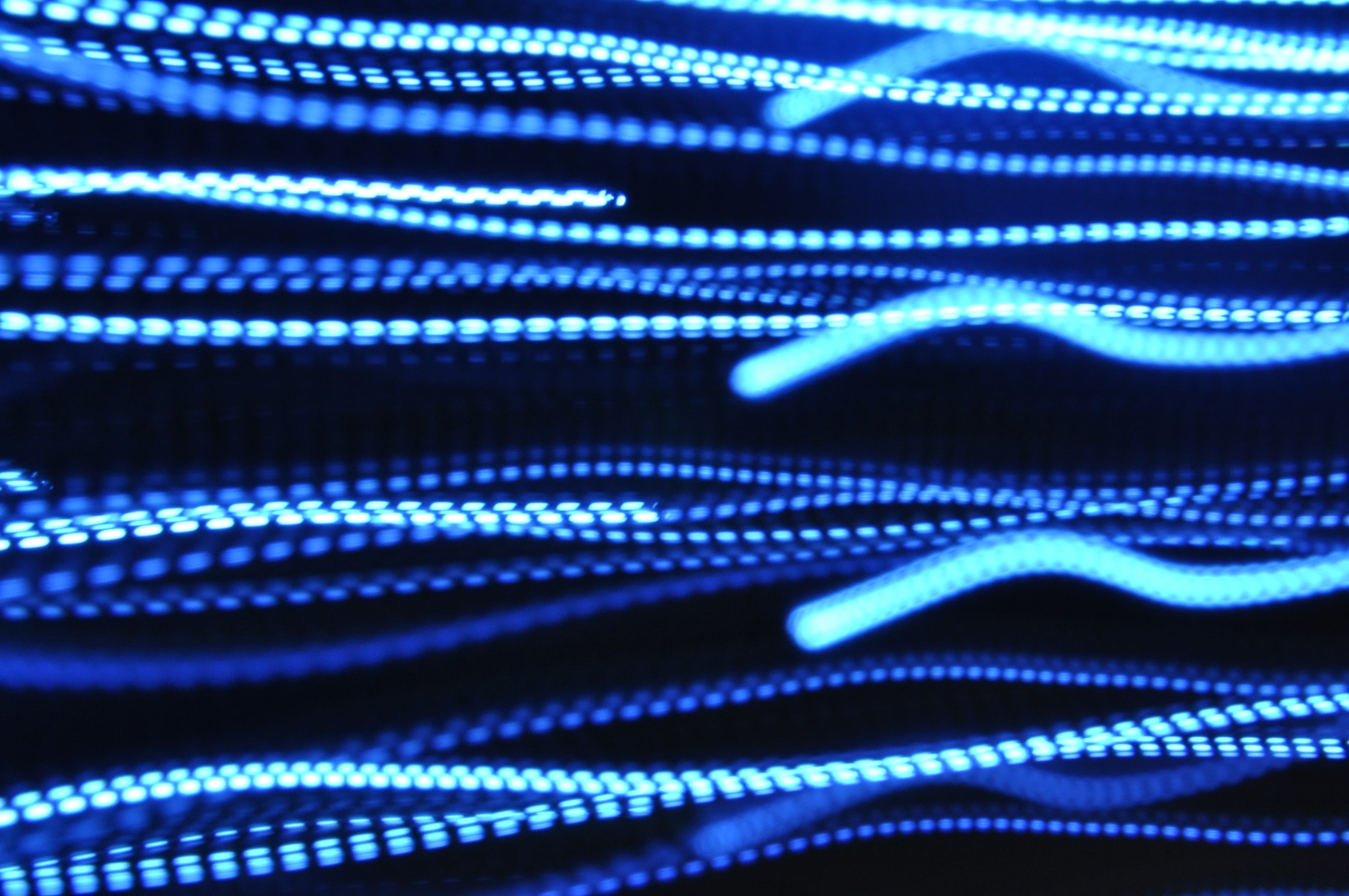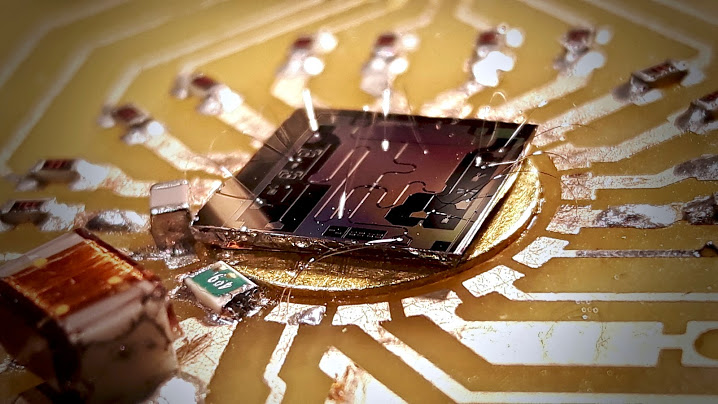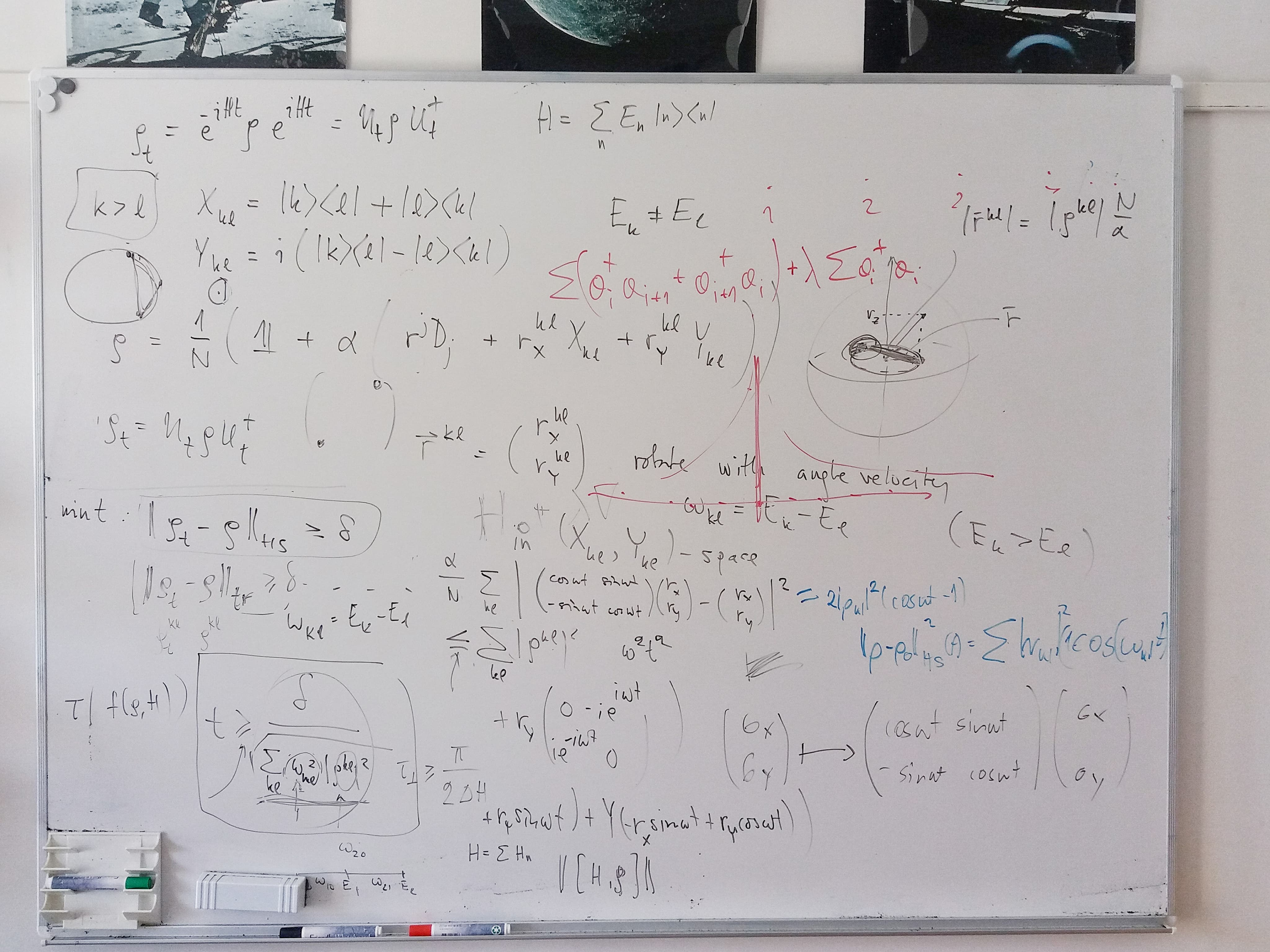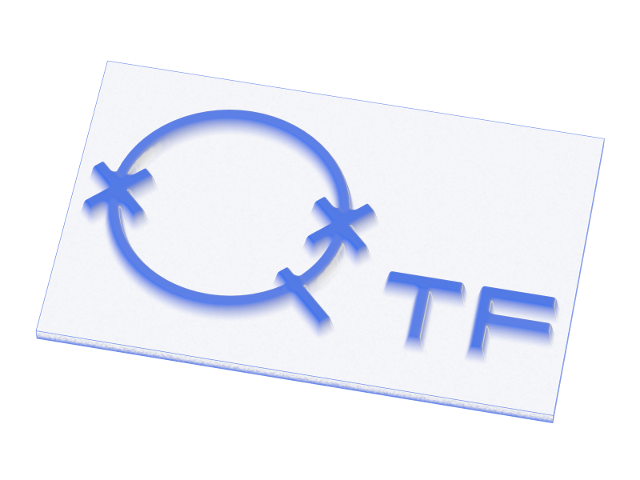New Directions in Quantum Information
122:026
Nordita, Stockholm
Venue

Nordita, Stockholm, Sweden
Scope
Quantum Information Science is a major frontier of modern science and technology, exploring physical situations that are classically impossible. An important technological application, already available today, is secure quantum key distribution realized by spatially separated entangled quantum states. This program will be centered around fundamental physical questions arising from the current development of new quantum technologies. The focus will be on effects and phenomena that appear already in quantum systems with a modest number of degrees of freedom, and which are already (or may soon be) experimentally realized.





[Timetable - available from start of the program]
Format
The program will be organized around four focus topics: Quantum Channel Capacity (C), Quantum Thermodynamics (T), Synchronization (S), and Future (F). Participants are encouraged to self-organize so that the focus will be mainly on one of the topics in each week.
One of the most striking differences between quantum and classical information is that two quantum channels can transmit more information together than the sum of what they can do separately, provided that the inputs are entangled. It has even been shown experimentally (Nawareg et al "Superadditivity of two quantum information resources" Science advances 3 e1602485 (2017)) that two zero-capacity channels can be super-activated to form a quantum channel with positive capacity. Focus topic C will provide a format to explore these new scenarios and applications. It will preliminarily take place in the working week April 1-5, 2019 .
Quantum thermodynamics stands for efforts to extend standard thermodynamics and non-equilibrium statistical physics to ensembles of sizes well below the thermodynamic limit, in non-equilibrium situations, and with the full inclusion of quantum effects. Recently there has been a convergence of tools from non-equilibrium thermodynamics and open quantum systems such that it is possible to consider (experimentally and theoretically) heat and work in single quantum systems (Vinjanampathy and Anders "Quantum thermodynamics" Contemporary Physics 57, 545-579 (2016)). A better understanding of quantum work and quantum heat can be expected to impact on fundamental limits to quantum information processing. Focus topic T will preliminarily take place in the working week April 8-12, 2019 .
In multiprocess networks individual processes need to have clocks that must be synchronized. In the classical domain the fraction of faulty process that can be tolerated is limited ("Byzantine Generals" problem), but in the quantum domain this is not so. Focus topic S will be centered on such issues and extensions to active replication, medium access control, position verification and causality verification and other possible new applications of quantum resources to fault-tolerant networks and distributed systems. It will preliminarily take place in the working week April 15-18, 2019 . Good Friday (April 19) is a public holiday in Sweden.
The overall focus of the program is on new areas where using quantum features can surpass classical bounds already for a finite and small number of qubits (or other states), and new applied and fundamental physical problems that arise in this context. Focus topic F will provide a a format to consider forward-looking and open-ended issues. It will preliminarily take place in the working week April 23-26, 2019 . Easter Monday (April 22) is a public holiday in Sweden.
Throughout the program there will be one or at most two talks per day with plenty of time for discussions in a relaxed atmosphere.
Participants include
|
Antonio Acín, ICFO (Barcelona, Spain) Tapio Ala-Nissilä, Aalto University (Espoo, Finland) Konrad Banaszek, University of Warsaw (Poland) Ingemar Bengtsson, Stockholm University (Sweden) Gunnar Björk, KTH (Sweden) Časlav Brukner, University of Vienna (Austria) Dagmar Bruß, Universität Düsseldorf (Germany) Adán Cabello, Universidad de Sevilla (Spain) Ralf Eichhorn, Nordita (Sweden) Juan Garrahan, University of Nottingham (UK) Markus Hennrich, Stockholm University (Sweden) |
Michał Horodecki, University of Gdansk (Poland) Alberto Imparato, Aarhus University (Denmark) Vladimir Krasnov, Stockholm University (Sweden) Ryoichi Kawai, University of Alabama (US) Jan-Åke Larsson, Linköping University (Sweden) Göran Lindblad, KTH (Sweden) Satya Majumdar, Université de Paris-Sud (France) Kirone Mallick, CE-Saclay (France) Jean-Marc Merolla, FEMTO-ST (Besancon, France) Klaus Mølmer, Aarhus University (Denmark) Juan Parrondo, Complutense University (Spain) |
Jukka Pekola, Aalto University (Espoo, Finland) Anna Sanpera, UAB (Catalonia) Aditi Sen De, Harish-Chandra Research Institute (India) Ujjwal Sen, Harish-Chandra Research Institute (India) Sai Vinjanampathy, IIT Bombay (India) Mark M. Wilde, Louisiana State University (US) Dong Yang, University of Bergen (Norway) Marek Żukowski, University of Gdansk (Poland) Karol Życzkowski, Jagiellonian University (Poland) |
Application
Registration to this event is now closed. If you believe to have a strong argument to participate anyway, contact the Organization Committee.
Travel Reimbursement
We generally expect all participants to cover their own travel expenses. Exceptions will be decided on a case-by-case basis by the Organizating Committee.
PhD students and young Postdoc fellows are eligible for travel grants to participate in the program. If you are interested in such a grant, please mark the corresponding field in the application form, briefly summarize your interest in the program in the comments field, and indicate an estimation of your expected travel expenses. Since only a limited number of grants is available, decision concerning the grants will be made on a case-by-case basis. Notification will be made shortly after the application deadline.
Accommodation
Nordita provides a limited number of rooms in the Stockholm apartment hotel BizApartments. For more imformation, see application form, or contact the organizers.
Sponsored by:
This event is made possible by generous support from Nordita, from Quantum Technology Finland and from International Centre for Theory of Quantum Technologies.


